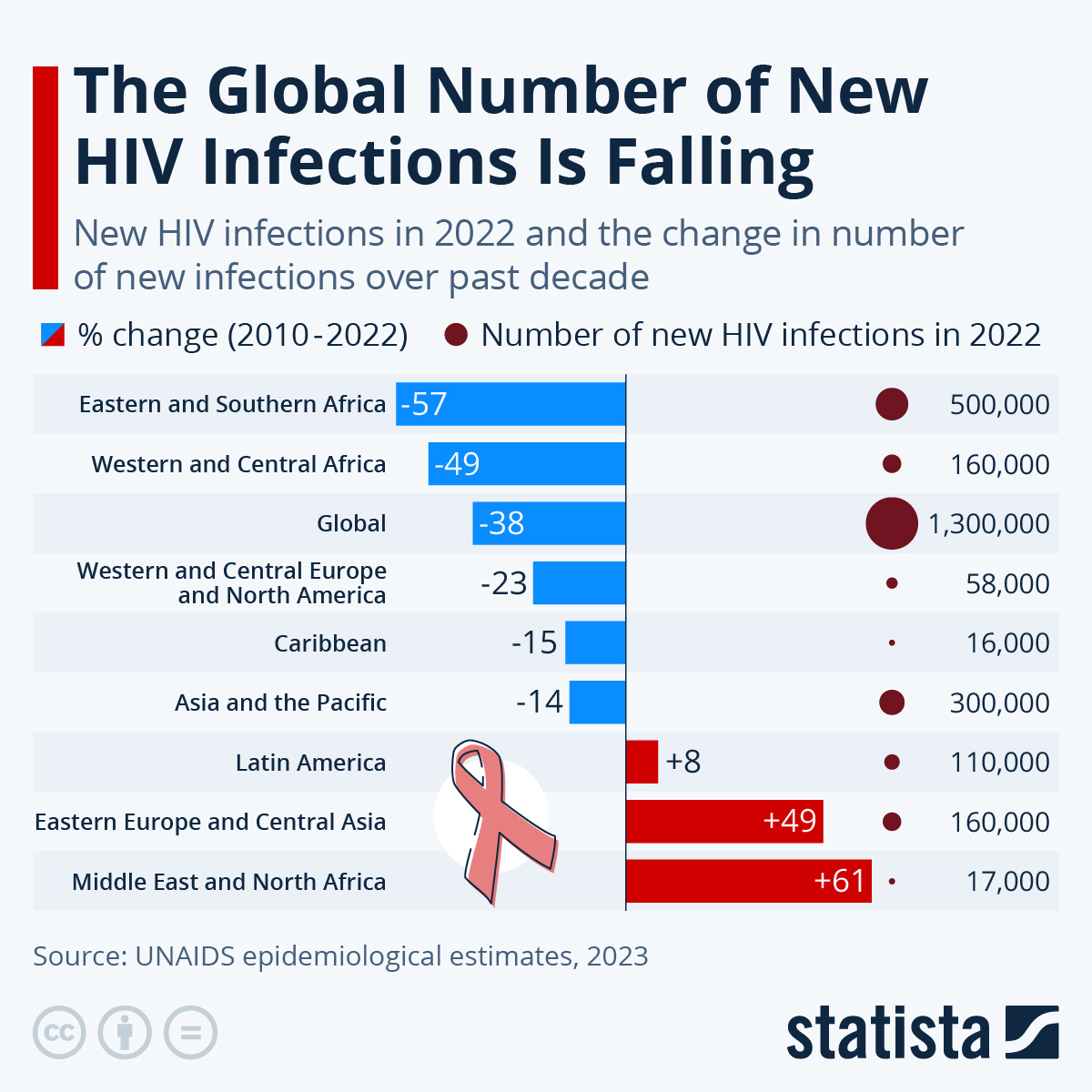Infection
Infographic: The Global Number of New HIV Infections Is Falling
There were an estimated 1.3 million new HIV infections in 2022, according to UNAIDS newly published report. While still too high, this figure is the lowest in decades, with declines particularly strong in regions with the highest HIV burdens.
As the following chart shows, Eastern and southern Africa have seen a fall of 57 percent of new HIV infections between 2010 and 2022. However, the region still has the highest number of new cases annually, with 500,000 recorded new infections in 2022. Asia and the Pacific had the second highest number of new cases at 300,000 worldwide, yet also saw a substantial fall, this time of -14 percent, over the 12 year period.
Three regions have seen increases in the number of HIV infections in that time frame: Latin America (+8 percent), Eastern Europe and central Asia (+49 percent), and the Middle East and North Africa (+61 percent).
According to the report, the biggest decreases in numbers of new infections were among children (aged 0-14 years) and young people (aged 15-24 years). This is partly due to fewer new HIV infections in women and higher coverage of treatment among people living with HIV.
The United States Conference on HIV/AIDS (USCHA) is kicking off today in Washington DC, running September 6-9. This year’s theme is ‘A Love Letter to Black Women’.
Description
This chart shows the new HIV infections in 2022 and the change in number of new infections since 2010.
Report

